6 Minutes
CGI Widebody Concept Reimagines the Demon 170
A striking widebody CGI of the Dodge Challenger SRT Demon 170 has surfaced online, turning heads with an aggressive stance and muscle-car bravado that looks built for the drag strip — even if it exists only in pixels. The render, shared by Instagram user @gomstyling, takes the already outrageous Demon 170 and imagines it with bolt-on fender flares, a bosozoku-inspired chin spoiler, an oversized ducktail, and ultra-wide wheels that give the car a more extreme, Liberty Walk-like silhouette.
Why this render matters
The Challenger SRT Demon 170 is already legendary: one of the most powerful production muscle cars ever made, and a car that blurred the lines between stock factory performer and full-blown drag car. Seeing it reinterpreted as a widebody concept offers insight into how modern tuning aesthetics — from Japanese bosozoku cues to European riveted wheels — can be grafted onto classic American V8 culture.
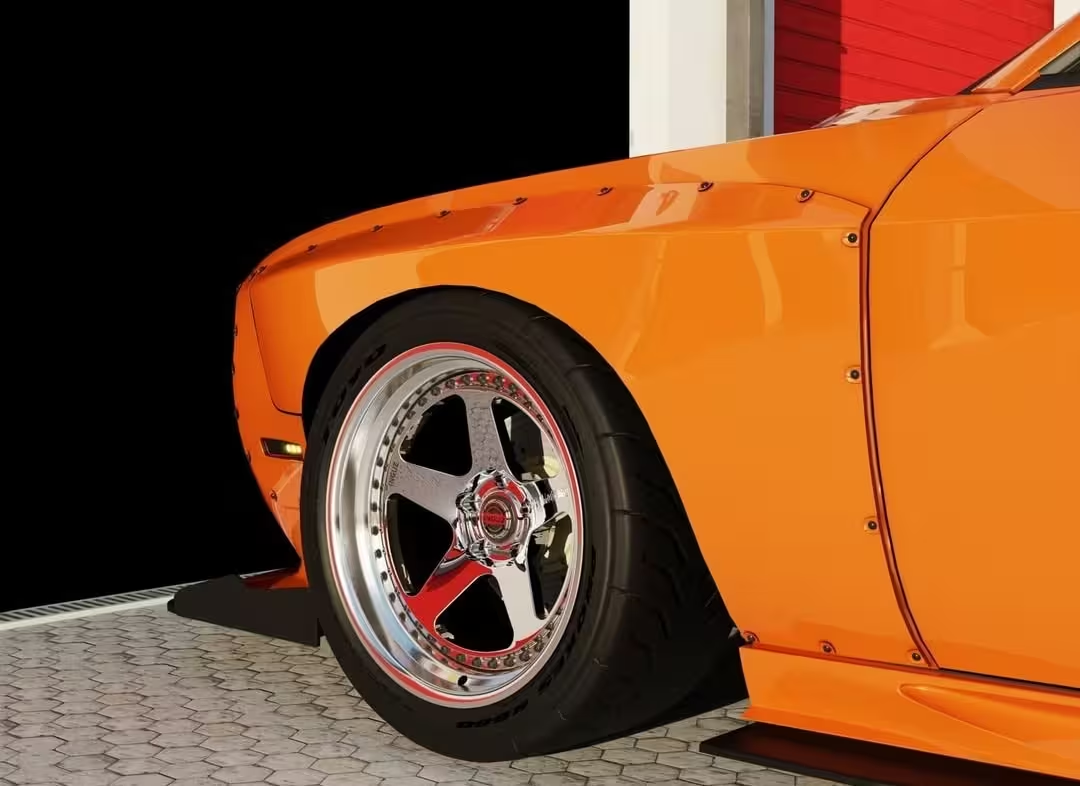
Performance DNA: The specs that make the Demon notorious
Even before any visual mods, the Demon 170 is a performance monster. Key factory figures that turned it into a modern legend include:
- Engine: 6.2-liter supercharged V8
- Power: 1,025 bhp (765 kW/1,040 PS) on E85; 900 bhp (671 kW/913 PS) on E10
- Torque: 945 lb-ft (1,280 Nm) on E85; 810 lb-ft (1,097 Nm) on E10
- 0-60 mph: ~1.66 seconds (manufacturer data / drag-optimized results)
- Quarter mile: factory-rated 8.91 s @ 151+ mph; some stock examples have run 8.8 s
- Acceleration: capable of pulling over 2 Gs under ideal conditions
Those numbers explain why tuners and digital artists alike are drawn to the Demon 170: it already behaves like a race car straight from the showroom.
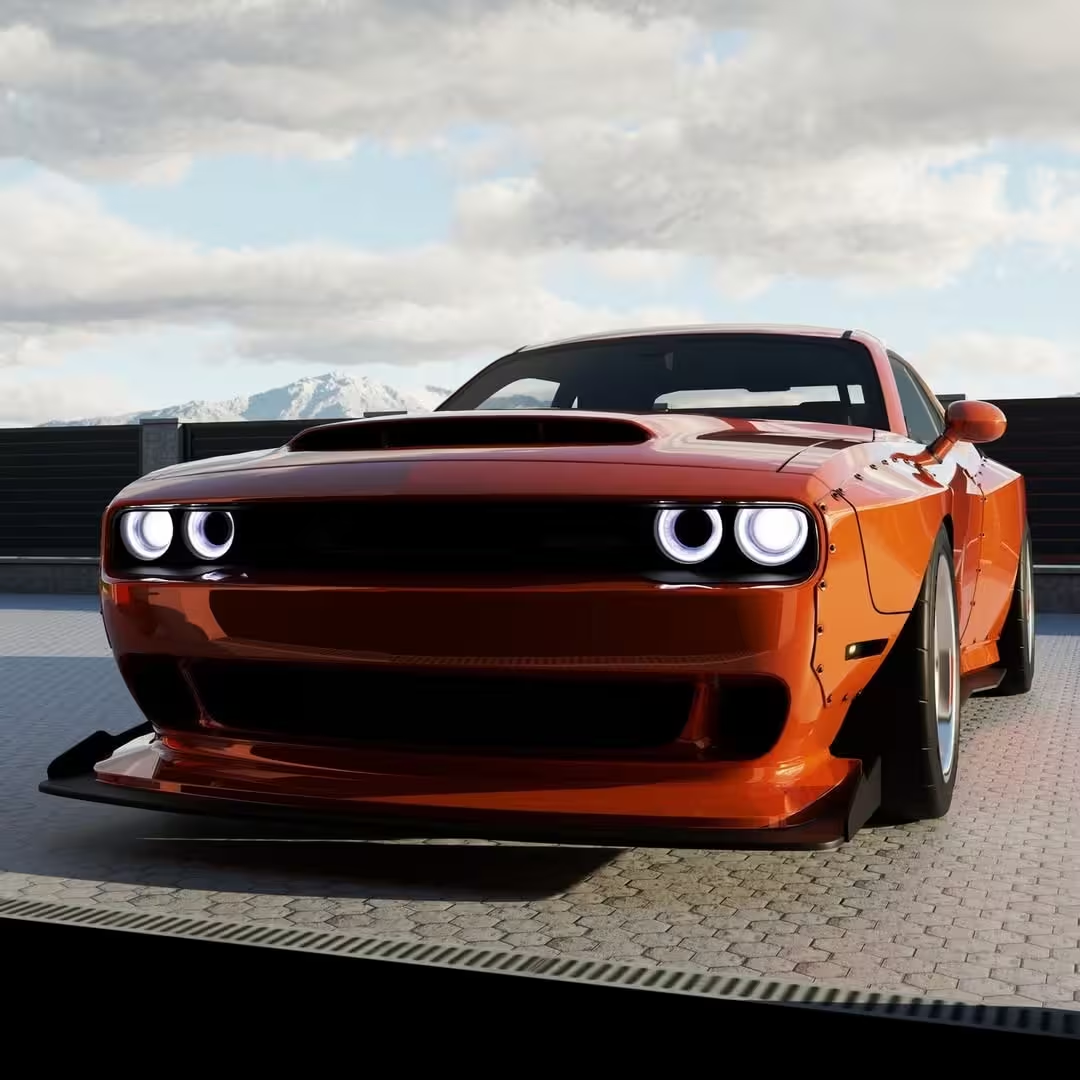
Design breakdown: what the render changes — and why
The CGI example amplifies the Demon’s natural aggression. Notable design changes include:
- Bolt-on widebody fenders that mimic Liberty Walk-style overfenders but appear removable, making the visual transformation dramatic without permanently altering the OEM structure.
- A pronounced front apron and chin spoiler nodding to Japanese bosozoku culture — a cheeky blend of low-and-wide track aggression and show-car flair.
- Ducktail rear spoiler and a discreet rear skirt that balance aerodynamics and style.
- Extremely wide, five-spoke chrome-look wheels with visible rivets, shod in sticky tires for optimal launch grip and dramatic stance.
- A high-contrast orange and black exterior theme and black leather interior hints in the CGI, preserving the Demon’s visual intensity.
While the wheels might remind some of classic Ferrari designs, the overall package reads as an international mash-up: American muscle bones with Japanese and European tuning dress-up.
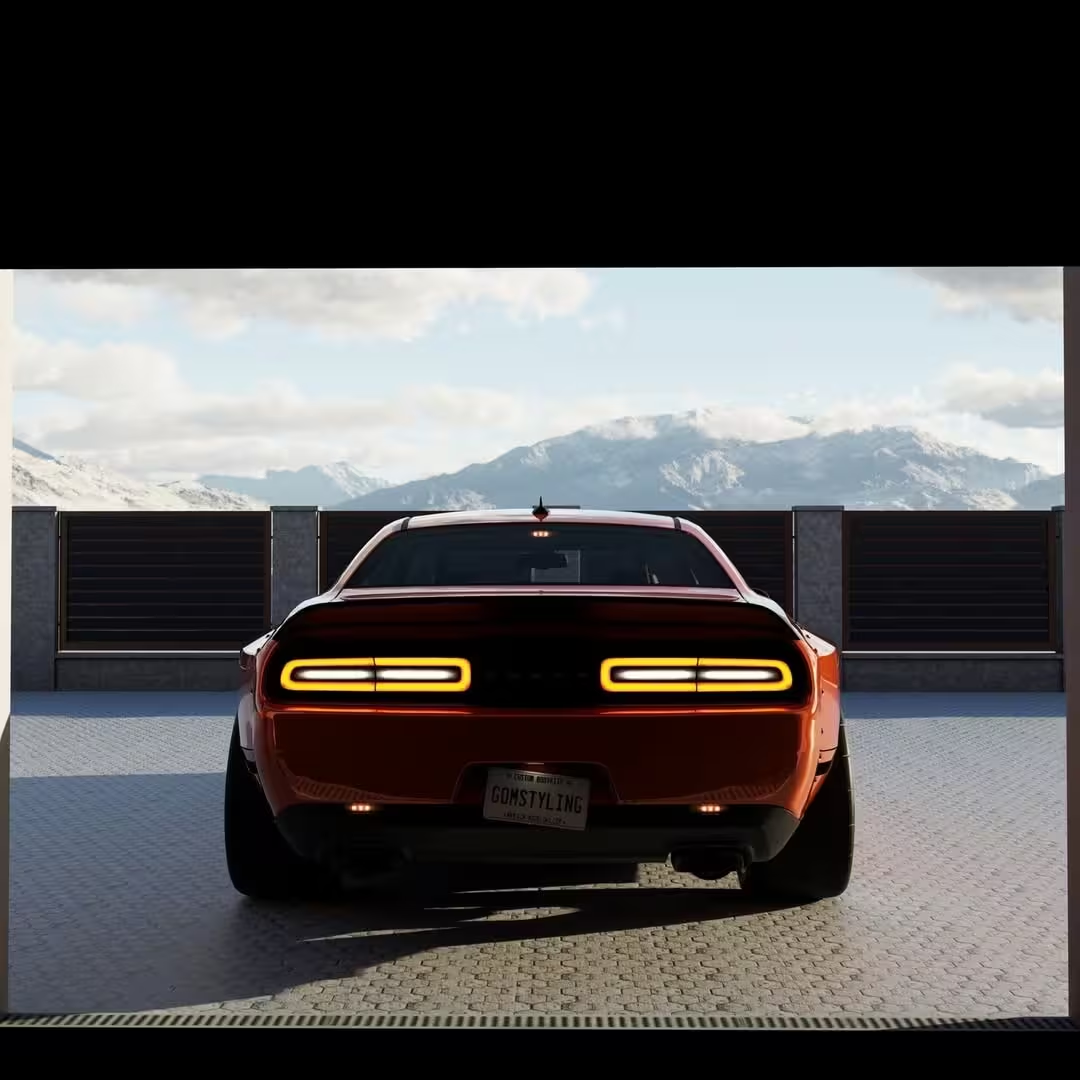
Would this work in real life?
Converting a Demon 170 into a widebody car similar to the render is technically feasible, particularly because the fender attachments are shown as bolt-on pieces. However, turning it back to factory condition later could be difficult — bolt-on parts still require careful fitment, alignment, and potentially drilling or modifying mounting points that complicate reversible restoration. Also consider:
- Weight and balance changes from wider wheels and body parts
- Wheel/tire fitment and clearance with suspension geometry
- Potential warranty and resale impacts
- Local road legality for extreme aero and wheel setups
Market context: rarity, price, and collectibility
When the Demon 170 launched, Dodge set an MSRP of $96,666 (excluding destination) — a deliberately devilish sticker that matched the car’s persona. Today, the market price for a good-condition Demon 170 ranges widely, generally between $150,000 and $250,000 depending on mileage, specs, and provenance. That appreciation reflects demand for limited-run, high-performance muscle cars that double as modern collectibles.
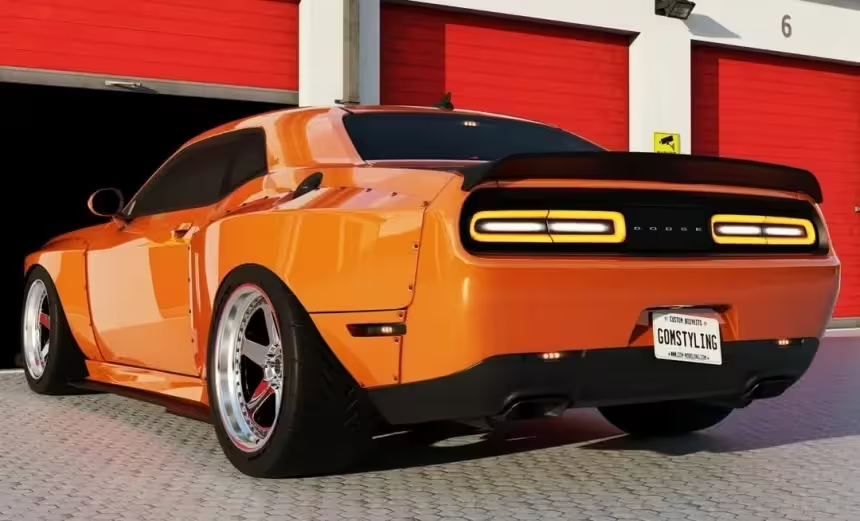
Modifying a Demon 170 with a widebody kit will likely polarize buyers: some will prize the unique look and custom character, while collectors often prefer original, unmodified examples — especially for cars appreciating in value.
Comparisons and culture: where the render sits in tuning history
This CGI sits at the intersection of several tuning cultures: the factory drag-radical ethos of the Demon, Japan’s dramatic aesthetic flourishes (bosozoku and Liberty Walk), and European wheel-and-rivet motifs. That cross-cultural styling trend is common in the digital tuning community, where artists blend influences without the constraints of factory homologation or track rules.
Quote: "The render is a fantasy exercise — part homage to the Demon’s drag heritage and part playground for global tuning trends."
Highlights
- Stunning visual contrast: orange paint with black accents
- Extreme stance and wheel fitment designed for dramatic photography and track shows
- Maintains the Demon’s aggressive character even as it borrows international design cues
Final thoughts: fantasy build or practical upgrade?
The widebody CGI of the Challenger SRT Demon 170 is an enticing thought experiment: it shows how far the muscle-car formula can be stretched while still honoring the car’s performance core. For owners, the decision to modify comes down to priorities — originality and resale value versus personal expression and track-focused performance. For enthusiasts, the render is simply fun: a reminder that even the most extreme factory cars can inspire even more extreme visual interpretations.
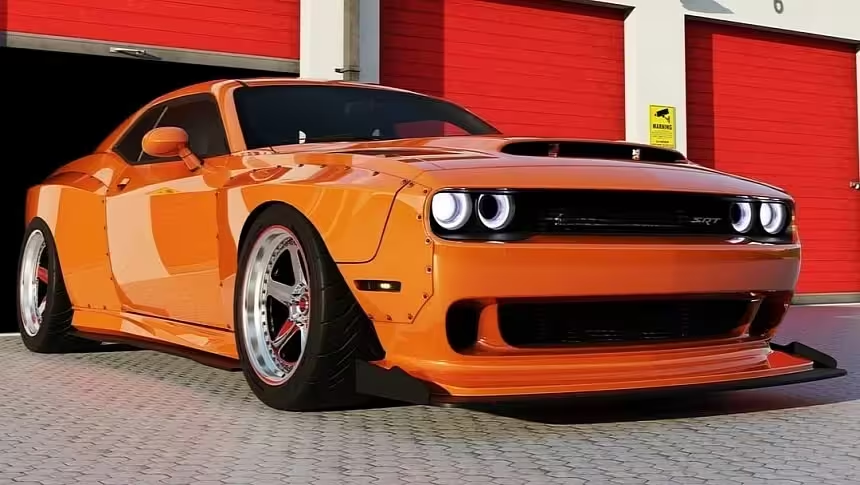
Would you bolt on a widebody to a Demon 170 or keep it untouched? For many collectors, the stock example is sacrosanct; for others, the chance to make a rare car uniquely their own is irresistible.
Whether real or rendered, the Demon 170 continues to captivate, proving that muscle-car culture still evolves — sometimes in steel, sometimes in pixels.
Source: autoevolution
Comments
mechbyte
is this even real? bolt on flares look cool but wider rubber + wheels = big stress on axles, brakes etc. seems more show than practical, unless they redo the whole drivetrain
v8rider
Wow that widebody CGI is wild... built for the strip not the street. Bolt ons tho, would wreck resale, but damn i'd love to see it IRL

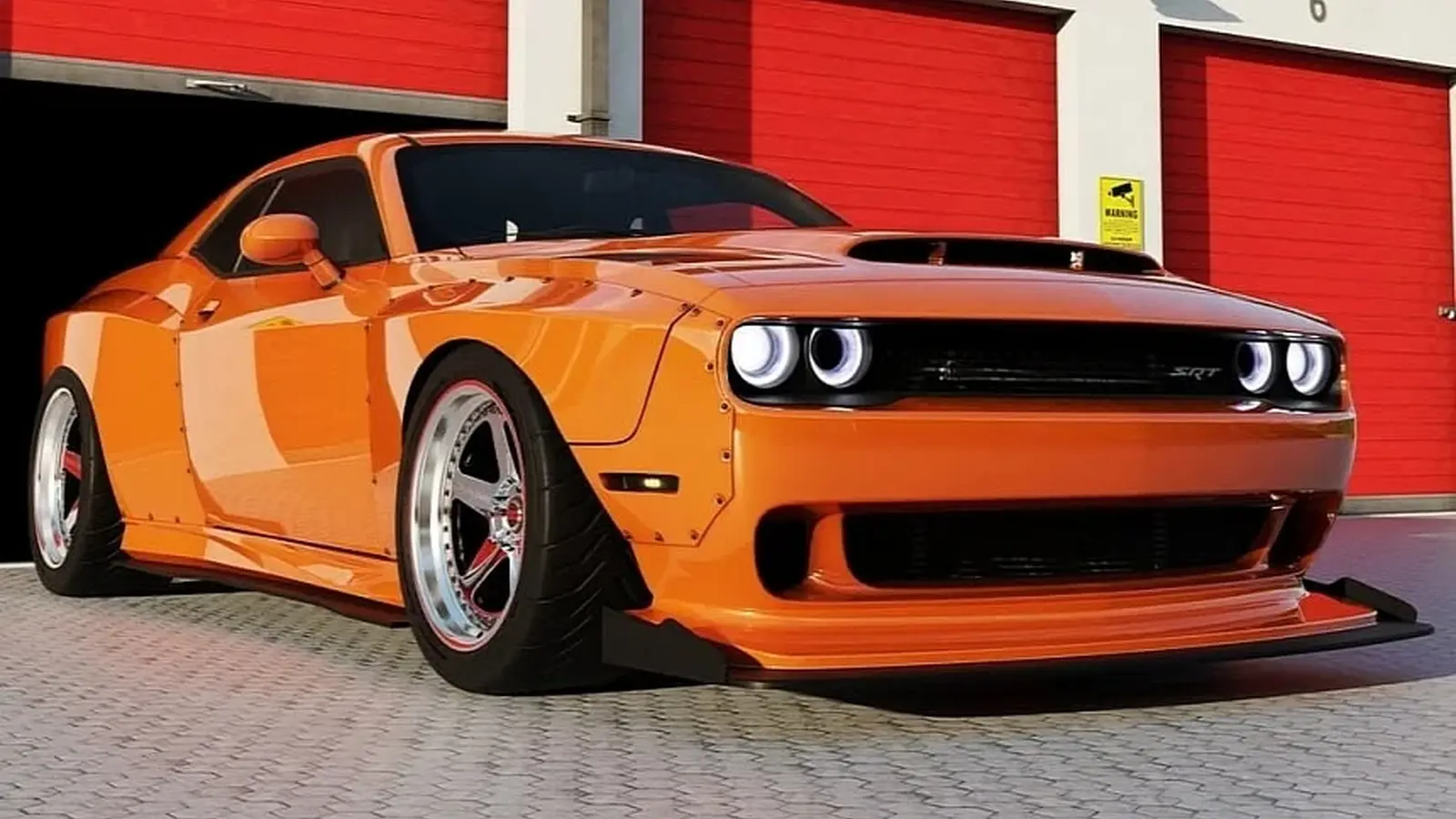
Leave a Comment